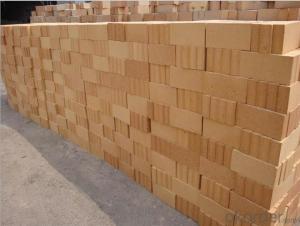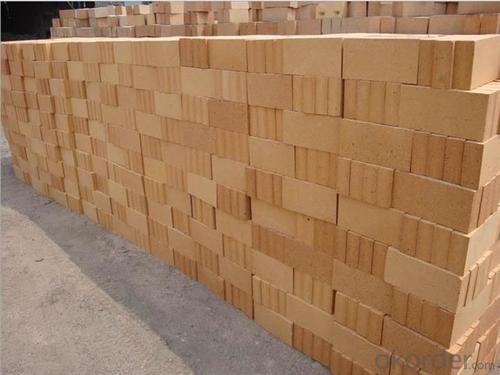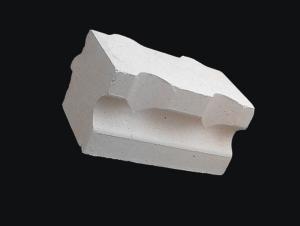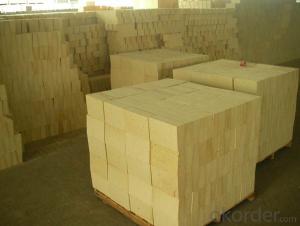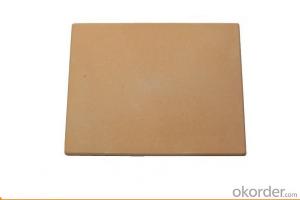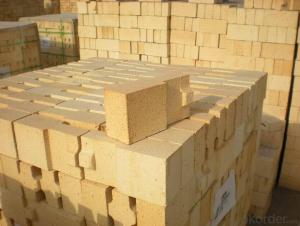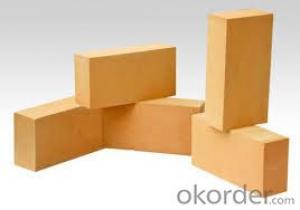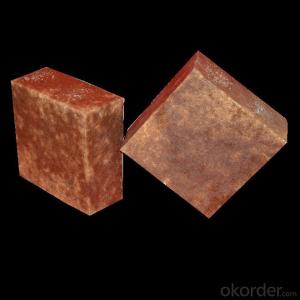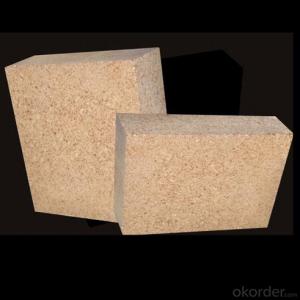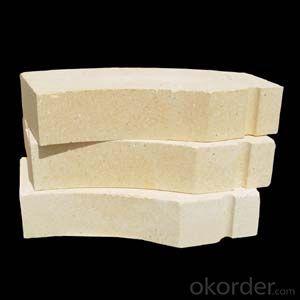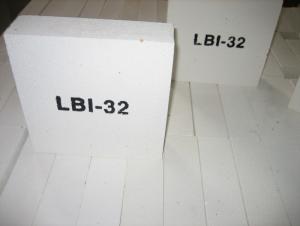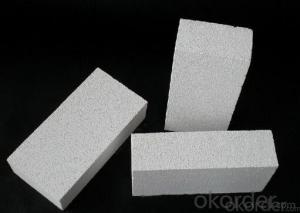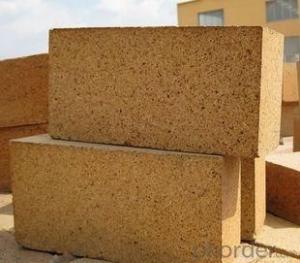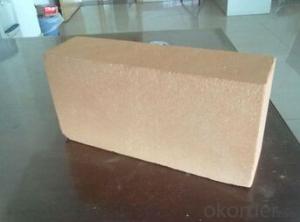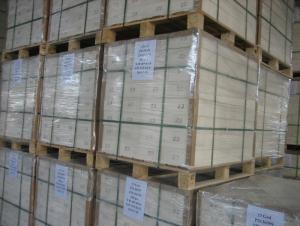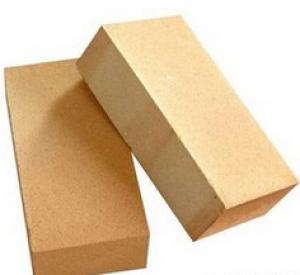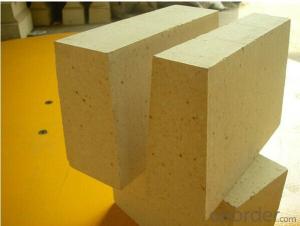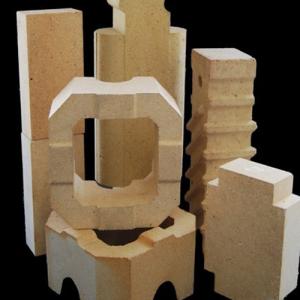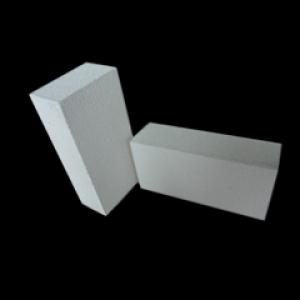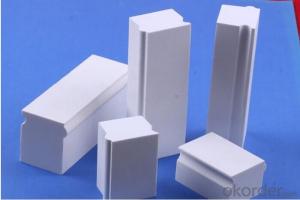High Alumina JM28 Insulating Firebrick Lightweight Mullite Brick Refractory Brick
- Loading Port:
- China main port
- Payment Terms:
- TT OR LC
- Min Order Qty:
- 1000 pc
- Supply Capability:
- 2000000 pc/month
OKorder Service Pledge
OKorder Financial Service
You Might Also Like
FEATURES:
Low thermal conductivity
High purity and low iron content
Good thermal shock resistance
Superior thermal shock resistance
Accurate dimension and easy cutting
TYPICAL APPLICATIONS:
Cracking Furnace
Conversion Furnace
Heating equipment
Refining equipment
Reproduction equipment
Hot Blast Stove
ADVANTAGES OF OUR BRICKS:
White and smooth appearance
Correct size and cut
Pure raw materials
Standard open porosity
High strength
Low shot content
DIMENSIONS:
Standard dimensions:
230X114X64mm
230X114X76mm
Customized production for bricks with special dimension is available
Shaped bricks such as arch or key can be produced according to the drawings
PACKAGES:
Packed in carton box:
Bricks are paved inside the cartons and normally,8 or 10 pcs bricks per carton box, this way of package is suitable for the procurement is samll quantities.
Packed in wooden pallet:
Bricks are paved onto the pallet in a row,each layer shall be separated and the wooden case is wrapped by film,the cardboard around the four sides of pallet will protect bricks in the transportation.
230X114X65mm,668pcs/pallet
230X114X75mm,560pcs/pallet
SPECIFICATIONS:
Description |
Grade 23 |
Grade 26 |
Grade 28 |
Grade 30 |
Chemical Composition (%) | ||||
Al2O3 | 42 | 56 | 67 | 73 |
SiO2 | 55 | 41 | 30 | 24 |
Fe2O3 | ≤1 | ≤0.8 | ≤0.7 | 0.7 |
K2O + Na2O | ||||
Physical Properties | ||||
Density (kg/m3) | 600 | 800 | 900 | 1000 |
Classification Temperature (℃) | 1300 | 1400 | 1500 | 1550 |
Cold Crushing Strength (MPa) | 1.2 | 1.8 | 2.5 | 3.3 |
Modulus of Rupture (MPa) | 1.0 | 1.7 | 2.3 | 3.1 |
Permanent Linear Change (%) x 24hrs | ≤0.6 | ≤0.6 | ≤0.8 | ≤0.9 |
Thermal Expansion (%) 1000 ℃ | 0.5 | 0.52 | 0.52 | 0.53 |
Thermal Conductivity (W/m.k) | ||||
350 ℃ | 0.18 | 0.25 | 0.33 | 0.38 |
400 ℃ | 0.20 | 0.29 | 0.35 | 0.40 |
600 ℃ | 0.24 | 0.32 | 0.37 | 0.42 |

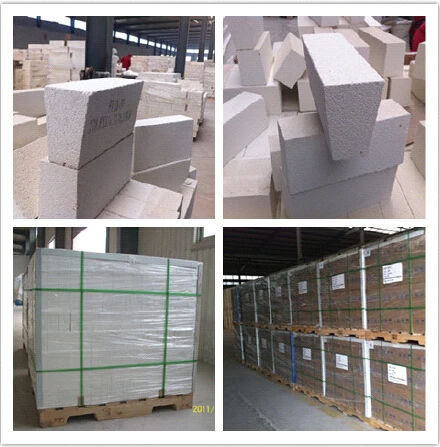
- Q: What are the high aluminum bricks made of?
- The amount of refractory mud accounts for about 6% of the brick weight
- Q: What is the heat preservation material used in a laboratory furnace?
- Thermal insulation cotton is a high-purity clay clinker, alumina powder, silica powder, chromium sand and other raw materials in the industrial furnace melting at high temperature, forming fluid. Then, compressed air is used to blow or use the wire throwing machine to turn the yarn into a fiber shape. After the cotton collector is collected, the cotton is formed into a heat preservation cotton.The high alumina brick is usually made of high alumina clinker with small amount of clay. After grinding, the high alumina brick is poured and shaped in the form of slurry by the way of gas generation or foam, and it is burnt at 1300~1500 DEG C. Sometimes industrial alumina can be used instead of some bauxite clinker. Used for lining and insulation of masonry kilns, as well as for areas where there is no strong, high temperature molten material erosion and erosion. When contacting the flame directly, the surface contact temperature shall not be higher than 1350 degrees centigrade.
- Q: The difference between aluminium refractory and magnesia refractory
- Therefore, the difference between the two is a neutral, one is alkaline, the original product is different naturally.
- Q: How are the high alumina bricks fired?
- According to the quality requirements of different grades of high alumina brick, choose different grades of bauxite raw materials, it is conducive to rational use, fine materials, fine distribution, as far as possible not to use mixed grade severe raw materials. The quality of the clinker depends on the calcination temperature, calcination temperature, sintering temperature should be generally reached or slightly higher than that of alumina clinker sintering, to ensure the full and possible high volume density, and the two secondary Mullitization and sintering shrinkage effect in calcination process. Lightweight high alumina brick, also known as high aluminum insulation brick (high-aluminium heat insulating brick). A lightweight refractory consisting of mullite and glass phases or corundum in excess of 48%. The volume density is 0.4 ~ 1.35g/cm3. The porosity is 66% ~ 73%, and the compressive strength is 1 ~ 8MPa. Better thermal shock resistance.
- Q: What's the price of high alumina refractory bricks?
- The price of high alumina refractory bricks varies greatly according to the content of AL2O3.
- Q: Aluminum content 38, silicon content 55 What refractory bricks?
- Semisilica brick: the content of Al2O3 is 15% ~ 30% of aluminium silicate refractory products. Manufacturing products are semi silica quartz containing impurities or native clay kaolin, refractory clay or kaolin beneficiation tailings and the pyrophyllite
- Q: Difference between low creep high alumina brick and ordinary high alumina brick
- The emphasis is on the physical and chemical indexes of low creep and high alumina bricks. The physical and chemical indexes of the high alumina bricks are different, too. They are DRL-1550And LZ-75 perform GB GB/T2988-2012
- Q: What are the requirements for refractory materials in heat treatment furnace?
- Refractoriness is the property of a refractory against high temperature, which means the temperature at which a refractory is softened to some extent after heating, but not its melting point. According to the degree of refractory, refractory materials can be divided into: General refractories, refractory degree is 1580 to 1770 DEG C; advanced refractories, refractory degree is 1770 to 2000 DEG C; special refractory material, refractory degree is greater than 2000 DEG C.
- Q: What is the difference between high alumina brick and clay brick?
- Lightweight high alumina bricks are usually made of high alumina bauxite clinker with a small amount of clay. After grinding, the bricks are poured and shaped in the form of slurry by gas or foam method. They are fired at 1300~1500 DEG C. Sometimes industrial alumina can be used instead of some bauxite clinker. Used for lining and insulation of masonry kilns, as well as for areas where there is no strong, high temperature molten material erosion and erosion. When contacting the flame directly, the surface contact temperature shall not be higher than 1350 degrees centigrade.
- Q: Use of high alumina refractory bricks?
- High alumina brick refractory than clay refractory bricks and brick refractory degree are higher, up to 1750~1790 DEG C, which belongs to high-grade refractory materials.
Send your message to us
High Alumina JM28 Insulating Firebrick Lightweight Mullite Brick Refractory Brick
- Loading Port:
- China main port
- Payment Terms:
- TT OR LC
- Min Order Qty:
- 1000 pc
- Supply Capability:
- 2000000 pc/month
OKorder Service Pledge
OKorder Financial Service
Similar products
Hot products
Hot Searches
Related keywords
